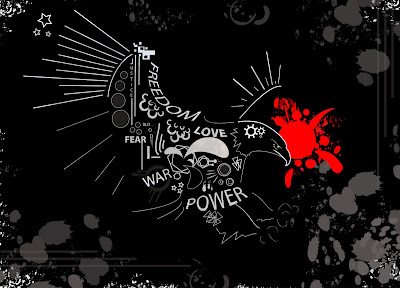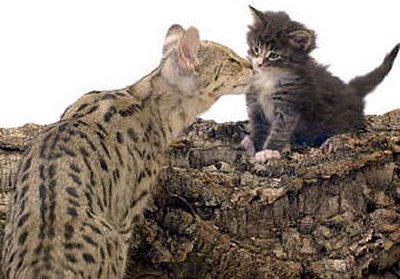







Lassie the Adventure
I'll bet everybody has heard of Lassie, even if they don't even like dogs! And the reason for this is because Lassie was very famous in the movies and on TV. Mom used to watch Lassie on TV when she was a little girl, and it was on at 6:00 p.m. every Sunday night, so Mom's mom and dad had to make sure that Mom was home then so she could watch it.
But before Lassie was on TV, she was a character in a short story called "Lassie, Come Home," which was written by a man named Eric Knight. Then this story was made into a novel with the same name, and after that, in 1943, it became a movie. And what happens in this story is that a boy who lives in Yorkshire, England, has a beautiful collie named Lassie. But then the boy's family becomes poor, so they have to sell their dog. But Lassie escapes from her new people and goes through all kinds of stuff in order to get back to the boy she loves.
Well, guess what! The dog who played the part of Lassie in the movie was actually a BOY dog, and his name was Pal! He was born on June 4, 1940 in North Hollywood, and he had a very fancy pedigree that went back to some famous collie in England in the 19th century. But the problem with Pal was that he had large eyes and a white blaze on his forehead, so he was not really a show quality dog, and he was sold as a pet.
Pal had some bad habits, like barking a whole bunch and also chasing motorcycles. So he ended up going to see a trainer named Rudd Weatherwax, who trained animals for the movies. Mr. Weatherwax was able to teach Pal not to bark so much, but he couldn't teach him not to chase motorcycles. Anyway, Pal's owner gave Pal to Mr. Weatherwax as payment for his work. But then Mr. Weatherwax gave Pal to a friend of his. But when Mr. Weatherwax heard that a movie was being made of Lassie, Come Home, he decided that Pal was the perfect dog to star in it, so he bought Pal back for $10.00.
The movie was a big hit, so MGM made, like, seven more Lassie films. But after 1951, the studio decided not to make any more movies about Lassie. So Mr. Weatherwax and Pal went out traveling to fairs and rodeos and places like that.
By this time, television had been invented, and a bunch of people bought TVs, and they wanted some interesting shows to watch. So this producer named Robert Maxwell got the idea of making a TV show about Lassie. He and Mr. Weatherwax and Pal made a couple of pilot episodes, and CBS started showing Lassie on September 12, 1954.
For the first three years, the show was about Lassie and a boy named Jeff Miller, who lived with his mother and grandfather. Then the story changed, and there was a younger boy named Timmy, who was adopted by a Mr. and Mrs. Martin. After eleven seasons, Lassie went to live with some U.S. Forestry Service workers. And then she spent a year just traveling around without any human to belong to until she finally ended up at a children's home for the last two seasons of the show.
Pal, the dog who started out playing Lassie, only did the first two episodes of the TV show. After that, he retired, and his son, Lassie Junior, took over. Then Lassie Junior got cancer, so his son Spook was brought in, but he didn't have a lot of training, and on the very first day that he was on the set, a light fell down and really scared him. So he was always kind of nervous while filming was going on. Spook's brother, Baby, played Lassie after that, and he did it for six years. The last two Lassies were named Mire and Hey Hey.
All of these boy Lassies were descended from Pal, who died in 1958. Mr. Weatherwax was very, very sad when Pal died because he loved Pal so much. He buried Pal in a special place on his ranch, and he visited the grave a lot. And he could never stand to watch one of the Lassie movies again because he didn't want to see Pal and be reminded that he was gone.
Anyway, Lassie was on TV for nineteen years, which is a really long time. The last episode was on was March 24, 1973. So this means that the show started when Mom was two years old, and it ended when she was a junior in college. I think people liked this show a lot because it was about a boy and his dog who really, truly loved each other, and the dog was incredibly smart and could rescue the boy from whatever scary situation he got himself into. Or if she couldn't rescue him herself, she could go get help.
But the main thing is the love between a dog and a human. That is a very old story, but no one ever seems to get tired of it.
Today, the Second Sunday of Easter, I had time away from my own congregation. So I visited a congregation about an hour away and heard my colleague Rev. Paul Lutz tell the story of Doubting Thomas by heart and listened to his sermon. He is the one who inspired me to try and tell the gospel by heart. I do it twice a year on Palm Sunday and Easter and would like to expand the tradition at St. John's. Paul's telling was amazing.
But what I enjoyed most worshipping this Sunday at Prince of Peace in Princeton Junction, is the use of Lassie as a sermon illustration. Pastor Lutz talked about his experience as a child watching Lassie with his family. This immediately evoked in me my experience watching the Lassie television show. Paul spoke of how Lassie would get himself into a mess, a tragedy would occur or Lassie would find himself in the midst of a crisis. Then there would be a commercial. Rev. Lutz told the congregation that he and his sisters would worry about what would become of Lassie during the commercial. And when the commercial was over, crisis, tragedy, or even certain death would be averted. Lassie would be fine all would be well.
He quoted, Julian of Norwich who says, "all will be well, and all will be well, and every kind of thing will be well." Because of Jesus, this is the promise of Easter. Crisis, tragedy, even death does not have the final say for us, Jesus promise of everlasting life does.
Who knew that an old television show about a dog could make the point so well? I thank Pastor Lutz for his hospitality and for preaching the gospel.
What did you hear this Sunday? How was your worship experience?




Lassie : Dog In Legend







































